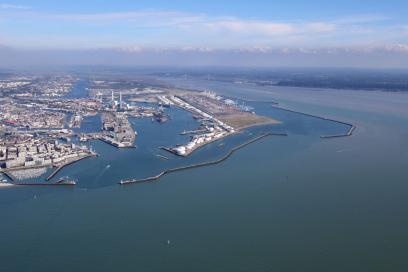- ABOUT US
- GOODS
- A multi-sector focus
- A maritime service offering in the first rank
- An attractive multimodal offering
- An expanded shortsea service offering
- Terminaux portuaires et quais à usage partagé
- High-quality ship services
- Fluid, facilitated goods throughput
- A port that puts its performance figures in the public domain
- PASSENGERS
- MULTIMODALITY
- ECOLOGICAL TRANSITION
- INNOVATION
The TERELIAN company, as leader, and its co-contractor, SDI (DEME Group), must first deploy a pyrotechnic detection campaign on the site of the future structures.
This is a crucial stage: the history of Le Havre, which was bombed during the Second World War, requires meticulous checks to locate and neutralise any explosive devices. This is done by electromagnetic detection and, if necessary, by divers. Objects identified as dangerous are secured by the government's mine clearance services.
This work, which also includes the removal of bulky items, is essential to guarantee the safety of the site. It will take an estimated 6 months to complete.
Continuity of action
This new project is part of the preparatory work undertaken by HAROPA PORT in early 2024 as part of its environmental measures. The port has, for example, installed buoys equipped with submerged hydrophones to characterise underwater noise during the works.
A strategic project for modal shift
River access to Port 2000 represents a major challenge for the creation of a carbon-free logistics corridor along the Seine. The River access to Port 2000 will eliminate offloading, make traffic more fluid and significantly increase the number of containers transported by inland waterway to and from Le Havre.
It demonstrates HAROPA PORT's determination to make inland waterway transport a cornerstone of tomorrow's logistics chain.
The project, worth a total of €197m, is being financed as follows: €86.05m by the Normandy Region, €3.6m by the French State, €24.9m by the European Union (via the Connecting Europe Facility) and €82.45m by HAROPA PORT.

